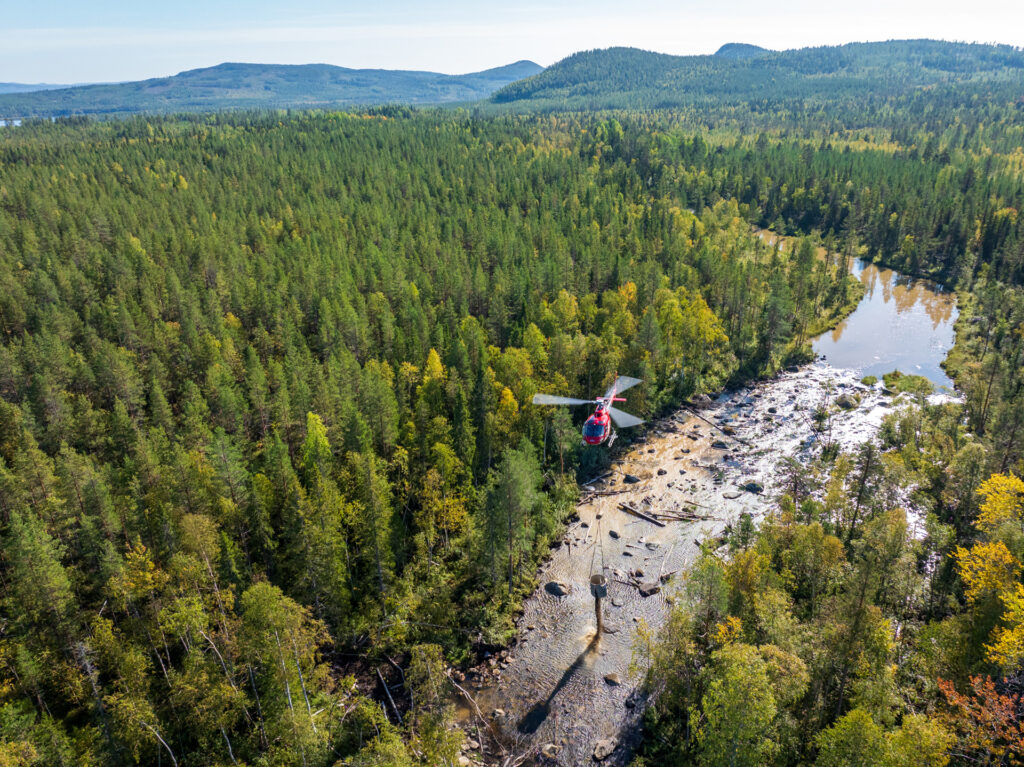In September, the Rewilding Sweden team organised a helicopter drop of 150 tonnes of sand and gravel into the Abramsån River. We caught up with a Norwegian PhD student involved with monitoring the impact of this pioneering intervention to find out why.
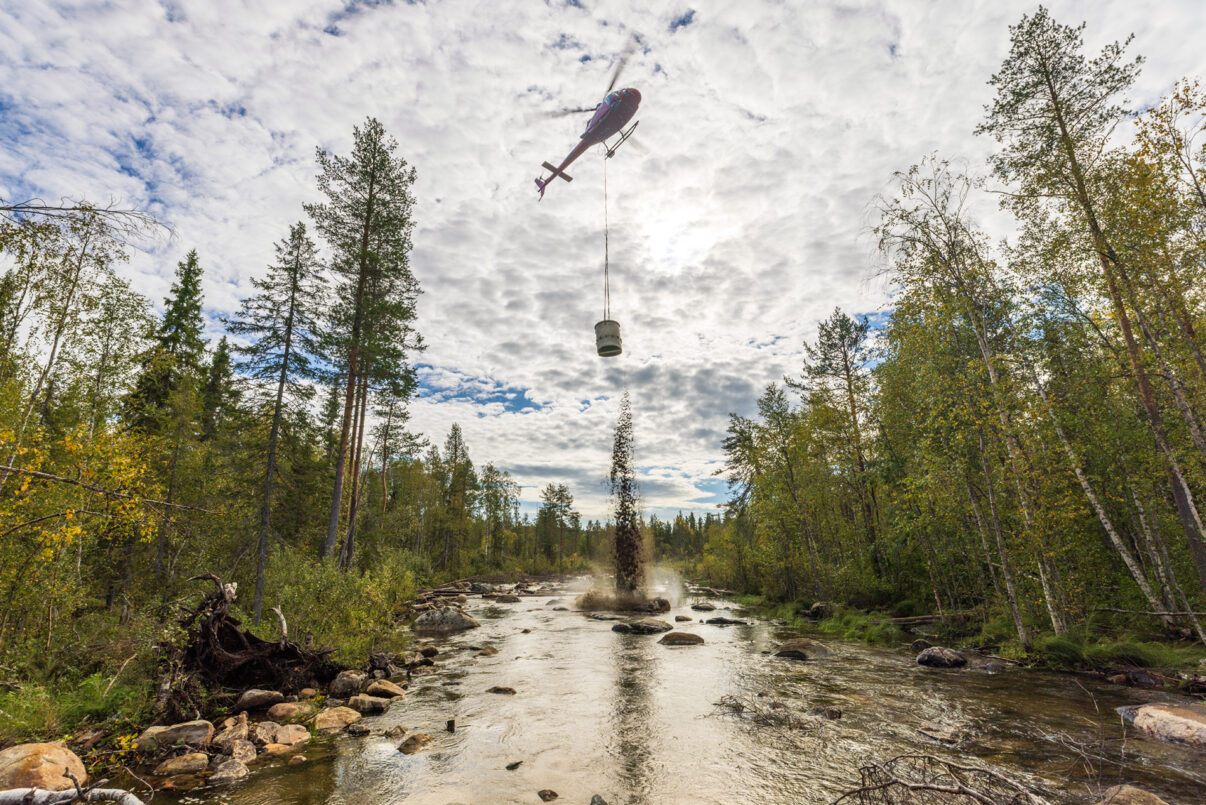
Located in Rewilding Europe’s Swedish Lapland rewilding landscape, the Abramsån River is a tributary of the 210-kilometre long Råne River – Europe’s longest undammed forest river. It is typical of many waterways in the northern Sweden damaged by historical logging.
In 2023, the Rewilding Sweden team kicked off efforts to rewild stretches of the Abramsån by restoring the natural shape and flow of the river. These actions are part of the team’s “waterscape” approach, which aims to enhance blue-green corridors for nature and wildlife by restoring the free flow of water, and enhancing the connection between healthy rivers and surrounding landscapes. In September this year – the second year of restoration on the Abramsån – the team organised a helicopter drop of 150 tonnes of sand and gravel into the restored stretch of the river.
Why did they do this, and what kind of impact are the team expecting? We asked Vebjørn Kveberg Opsanger, a Norwegian PhD student at the Trondheim-based Norwegian Institute for Nature Research (NINA) involved with monitoring, to explain.
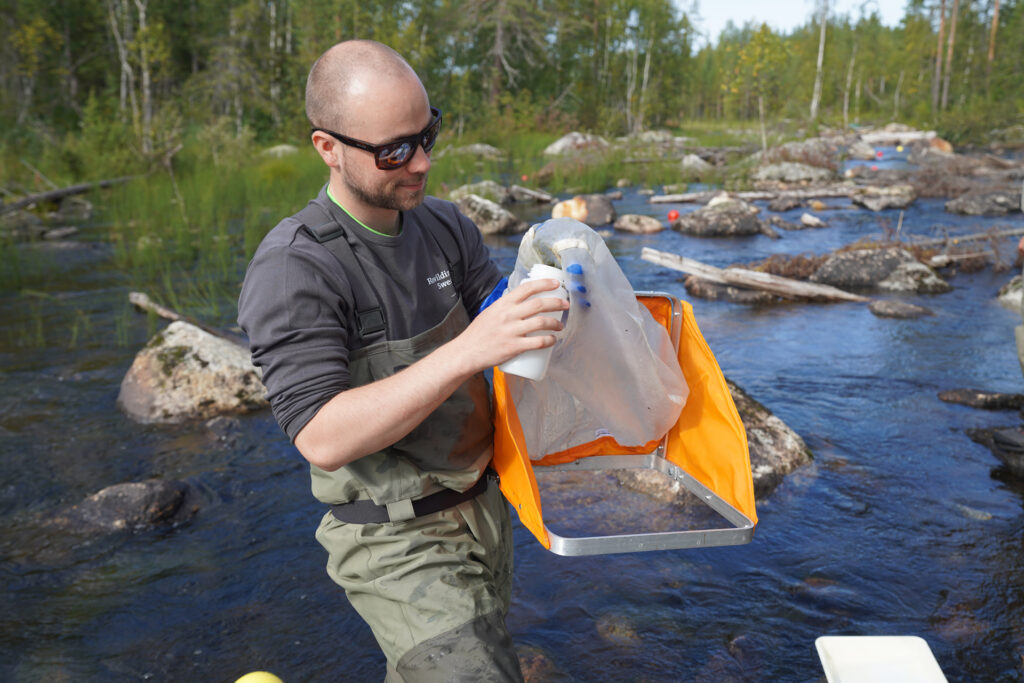
Why was the sand and gravel dropped in the river?
In the early twentieth century, the Abramsån was heavily impacted by Sweden’s industrial-scale forestry industry. To facilitate the transportation of logs, large boulders and stones were removed from the river bed and piled up at the river’s edge, while a wooden floor made up of individual tree trunks was laid down in parts of the river. The river channel was also straightened out and narrowed, to further enhance the timber floating process.
This channelisation increased the flow of water in the river, which in turn washed away almost all of the fine-grained sediment that would, under natural conditions, be found in pockets and backwaters around larger stones on the riverbed. It was pretty much all flushed downstream. Without this sediment, many bottom-dwelling insect larvae (or benthic fauna) were deprived of habitat, so their populations declined and disappeared. Additionally, the spawning grounds of fish and habitat for freshwater pearl mussels disappeared too.
The recent efforts of the Rewilding Sweden team have reversed the channelisation on the Abramsån, and have helped to restore the natural flow of water. But the fine-grained sediment is still missing, and it would take centuries for it to build up again naturally. By reintroducing sand and gravel, the aim is to accelerate the recovery of a range of benthic fauna species, boost the reproduction of fish such as trout and salmon, and enhance mussel populations.
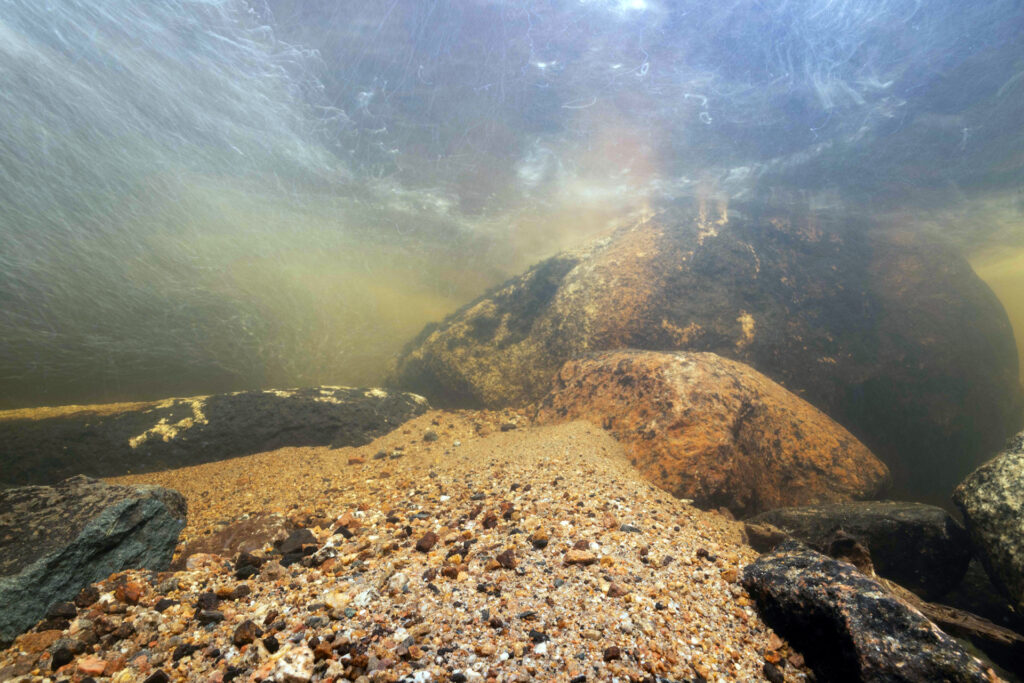
Why are bottom-dwelling insect larvae important for the ecosystem?
Benthic fauna is a general term used for small animals that live at the bottom of rivers and lakes and includes many different groups – such as insect larvae, small bristle worms, nematodes, mussels, snails, clams, mites, beetles, and leeches. Enabling populations of these animals to recover in the Abramsån will lead to the higher retention of nutrients in the restored stretch of river, because they feed on organic material in the water, such as that derived from leaves. Predatory animals, such as fish, then feed on the benthic fauna. So there is potential for the whole food web to be enhanced. Bottom-dwelling animals also act as decomposers and help to clean the water through filtration.

How long will it be before the impact of the drop on benthic fauna becomes noticeable?
Although initiatives to return gravel have been carried out in the past in rivers in northern Sweden, these have focused on fish. This is one of the first interventions of its kind to focus primarily on benthic fauna, so it’s hard to say exactly how long it will take for the positive impact of the sand and gravel drop on this animal group to become apparent, and what that impact will be.
I will be involved with monitoring this impact as part of my doctorate. I have already taken samples from the Abramsån over the summer to measure the benthic fauna before the sand and gravel were dropped in the river. I haven’t finished analysing these samples yet, but expect populations of sand and gravel dwellers to be quite low, compared to natural stretches of other rivers in the same area.
I will return to the Abramsån in 2025 and 2026 to see how benthic fauna populations have changed. A restored site with no addition of sand and gravel will function as a control site. In terms of insects and other benthic fauna recolonising the sediment, dispersal from other rivers could take some time. I’m hoping we will see some positive impact within two years and look forward to giving you some updates.
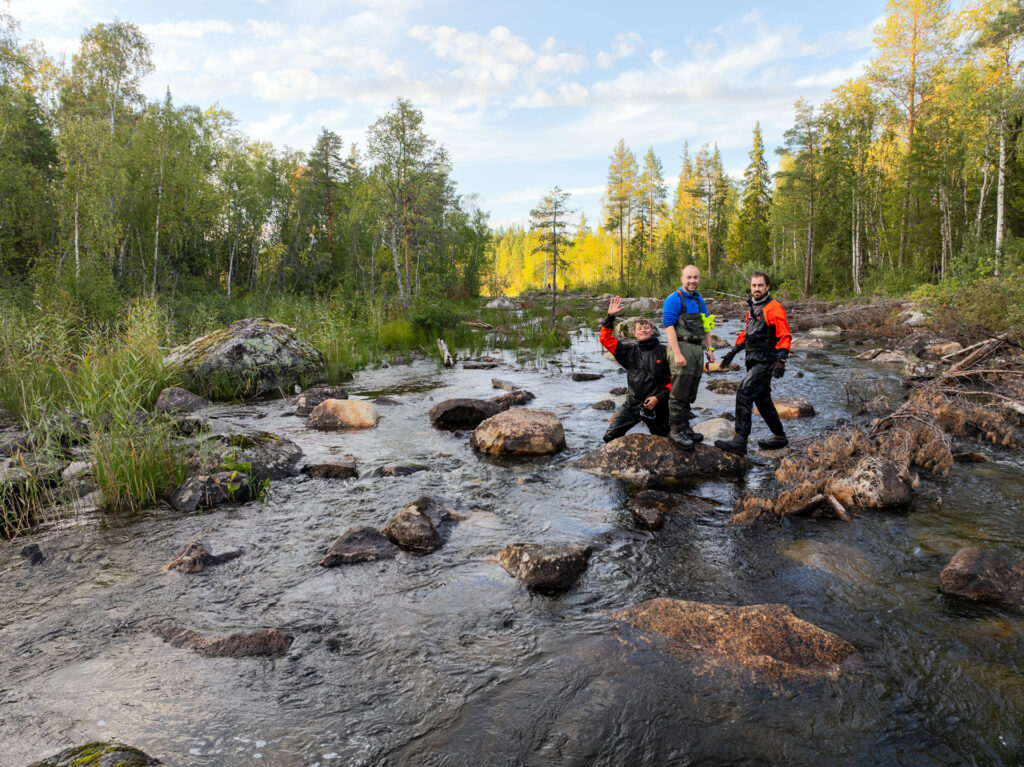
Does the natural flow of the river help to distribute the sand and gravel?
Yes, it does. In terms of fine sediment, nothing that is placed in the river is guaranteed to stay there. The sand and gravel was dropped in multiple spots by the helicopter, along the stretch of the Abramsån that the Rewilding Sweden team have recently restored. Much of this may have already been redistributed by the natural flow of the river, but some will accumulate in places where it would be found naturally. In fact, 150 tonnes sounds like a lot, but it’s actually less than you think when placed in the river to fill cavities and holes formed on the riverbed between and underneath larger stones that have been returned as part of the restoration process.
If this intervention proves to be successful, then the team will consider using the same approach in other sections of the Abramsån, and in sections of other rivers, that are restored moving forwards.
The return of sand and gravel in Abramsån was financed by EKOEnergy.
